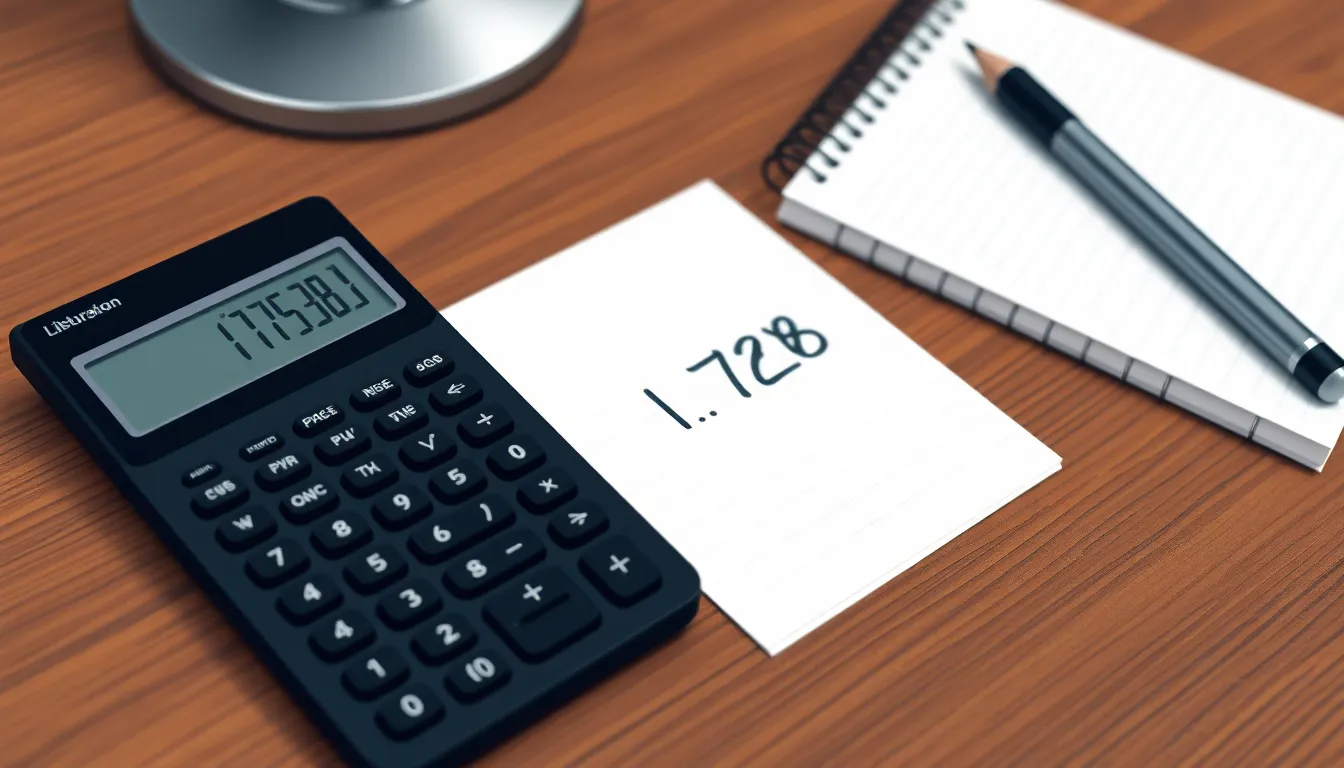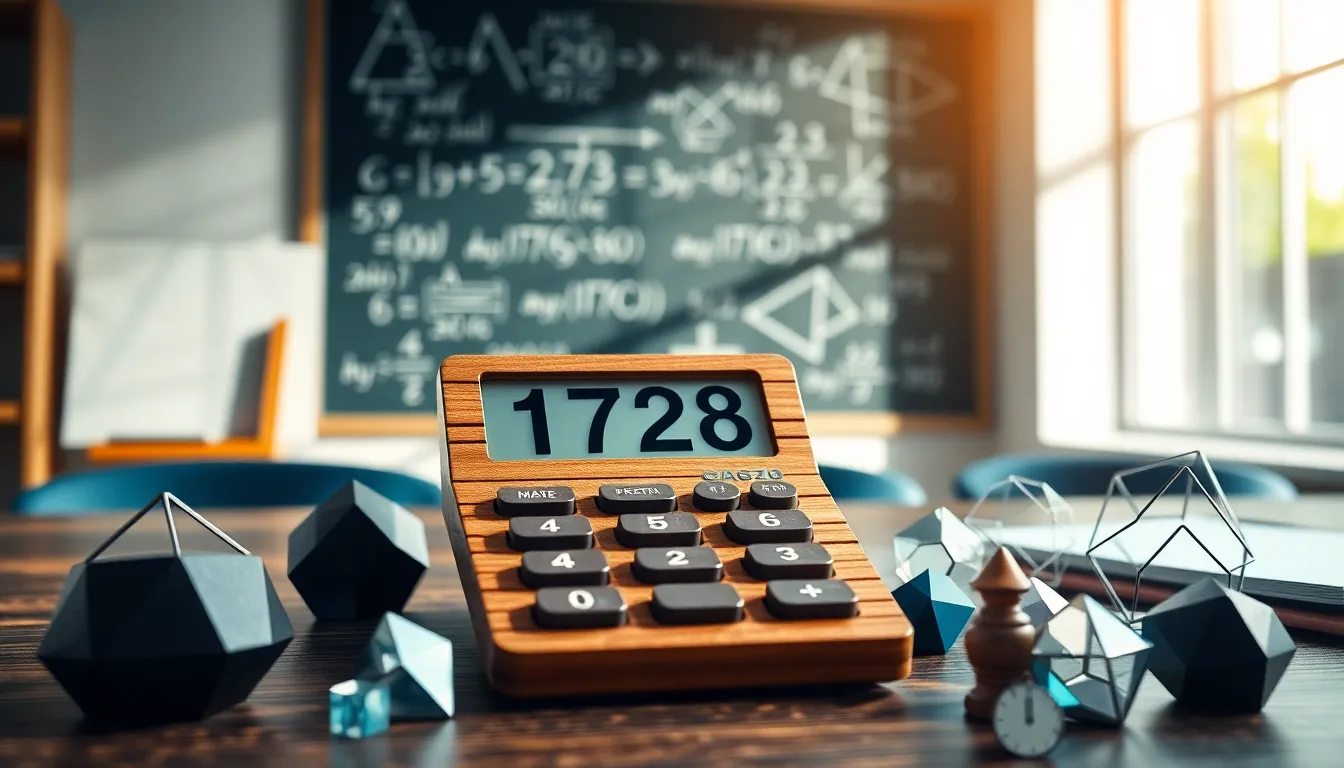When it comes to numbers, some just pack a punch, and 12 to the power of 3 is one of those heavyweight contenders. This mathematical powerhouse doesn’t just sit quietly in the corner; it bursts onto the scene with impressive flair. If you’ve ever wondered how a simple number can transform into a giant, you’re in for a treat.
Table of Contents
ToggleUnderstanding Exponents
Exponents serve as a crucial concept in mathematics, illustrating how numbers interact and grow. This section explores their definition and importance in greater detail.
Definition of Exponents
An exponent indicates how many times a base number multiplies itself. For instance, in the expression 12 to the power of 3, 12 serves as the base, and 3 represents the exponent. This expression means multiplying 12 by itself three times, resulting in 12 x 12 x 12. Powers can apply to any number, not just integers. Additionally, exponents can be positive, negative, or even fractions, which expands their application in various mathematical contexts.
Importance in Mathematics
Understanding exponents enhances number manipulation skills. They simplify complex computations, especially in algebra and calculus. Exponential growth often models real-world situations like population increase or financial interest. Additionally, exponents provide a concise way to express large numbers, such as scientific notation. By mastering exponents, students access advanced concepts and improve problem-solving abilities in various math fields. Explorations in exponential equations often lead to richer mathematical understanding and applications.
Calculating 12 to The Power of 3

Calculating 12 to the power of 3 involves straightforward multiplication. This calculation illustrates the significance of exponents in determining the product of a number multiplied by itself multiple times.
Step-by-Step Calculation
Start with the base number, which is 12. Multiply 12 by itself to get the first result:
[ 12 times 12 = 144 ]
Next, take that result, 144, and multiply it by 12 again:
[ 144 times 12 = 1,728 ]
Thus, 12 to the power of 3 equals 1,728.
Alternate Methods of Calculation
Using alternative methods can enhance understanding. A calculator provides an efficient way to compute powers. Simply input 12, select the exponentiation button, and then enter 3. This method yields the same result of 1,728 quickly.
Utilizing programming languages like Python also enables calculation with simple code. The expression 12 ** 3 executes the exponentiation directly, producing 1,728. Both methods validate the power of 12 effectively.
Applications of 12 to The Power of 3
Exponential calculations like 12 to the power of 3 find relevance in various practical scenarios. Understanding these applications illustrates the broader significance of this mathematical concept.
Real-World Applications
12 to the power of 3, calculated as 1,728, serves real-world functions in areas such as finance and computer science. In finance, exponential growth models help assess investments, predicting how money can grow over time. In computer science, 1,728 bytes represents a memory unit, reflecting its importance in computing capacity. Additionally, sectors like engineering utilize such calculations to determine material volumes and futuristic designs.
Use in Different Fields
Different fields showcase the versatility of 12 to the power of 3. In statistics, it aids in data analysis, helping to understand variations among large datasets. Engineering employs this value when calculating structural loads, ensuring safety and reliability. Educational systems also leverage exponents in classrooms, teaching students vital mathematical concepts that apply across disciplines. The gaming industry utilizes these numbers to develop complex algorithms and enhance user experience, showcasing the demand for precise calculations.
Comparing 12 to The Power of 3 with Other Powers
Examining 12 to the power of 3 reveals interesting comparisons with other exponential values.
Similar Exponential Values
12 raised to the power of 3 equals 1,728. In contrast, 10 to the power of 3 equals 1,000. Similarly, 13 to the power of 3 results in 2,197. Notably, 15 to the power of 3 yields 3,375. These figures highlight how even small base changes create significant differences in results. Each base represents a unique scenario in applications like finance and computing.
Differences and Unique Properties
The unique properties of 12 to the power of 3 showcase its role in various fields. Unlike smaller bases, this value finds relevance in statistics for data analysis. Additionally, its calculation of 1,728 serves as a key memory unit standard in computing. In finance, modeling exponential growth becomes clearer with this larger base. Differences between 12 and other bases, like 8, which equals 512, emphasize the expanding impact of larger exponents. Understanding these distinctions fosters better comprehension of how exponential values can operate in real-world contexts.
The exploration of 12 to the power of 3 reveals the incredible impact of exponentiation in mathematics. This expression not only simplifies complex calculations but also plays a vital role in various real-world applications. From finance to engineering and computer science, understanding how exponents function enhances problem-solving skills and decision-making.
As demonstrated, 12 to the power of 3 equals 1,728, a number with significant implications across multiple fields. Recognizing the importance of such calculations fosters a deeper appreciation for mathematics and its relevance in everyday life. Embracing these concepts can lead to greater insights and innovations in numerous disciplines.




